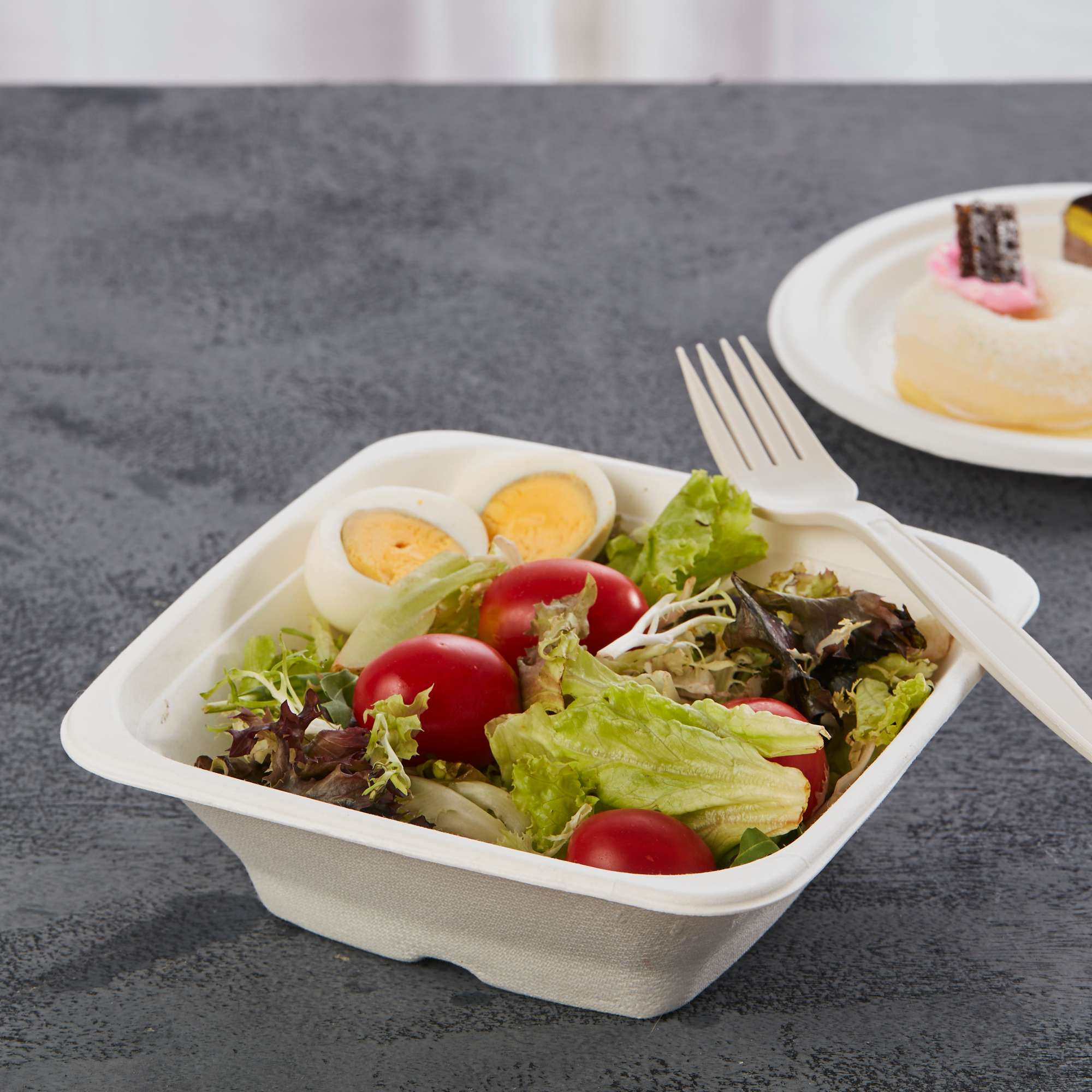Walk through any supermarket aisle or open your takeout bag, and chances are high you've encountered BPA or PFAS—maybe without even knowing it. They're not just chemical acronyms on health blogs; they're everywhere in packaging, plastics, linings, and cookware. But what exactly are they? Are they the same thing? And more importantly—how do you avoid them?
If you've ever asked, “is BPA hetzelfde als PFAS?”, you're not alone. This blog unpacks seven essential truths about these chemicals and provides actionable, science-backed solutions, including plant-based packaging alternatives like bagasse and cornstarch.
Truth 1: BPA and PFAS Are Not the Same—but Both Are Harmful
Let's start with the basics:
-
BPA (Bisphenol A) is used to make hard, clear plastics and epoxy resins.
-
PFAS (Per- and polyfluoroalkyl substances) are used to make materials grease, stain, and water resistant.
They are not chemically identical, but both are toxic, persistent, and often found in disposable consumer goods.
Truth 2: Their Effects on the Body Are Distinct—But Equally Concerning
-
BPA mimics estrogen and affects the endocrine system (hormonal imbalance, infertility, child development).
-
PFAS accumulate in the body over time, damaging the liver, kidneys, thyroid, and immune system, and are linked to several cancers.
Both are widely detected in blood samples worldwide—even in newborns.
Truth 3: PFAS Last Forever, BPA Doesn't—but That's Not the Full Story
BPA can break down in the environment over months or years.
PFAS, on the other hand, can last centuries—which is why they're called “forever chemicals.”
Still, repeated BPA exposure—from microwaving plastic containers, drinking from bottles, or eating canned food—can cause long-term health damage.
Truth 4: They Hide in Everyday Items—Unless You Choose Carefully
| Common Product | BPA Risk | PFAS Risk | Safer Option |
|---|---|---|---|
| Plastic lunch boxes | High | Low | Stainless steel or bamboo |
| Canned soups or beans | High (can lining) | None | Fresh produce or glass jars |
| Grease-resistant paper | None | High | Bagasse clamshells |
| Microwaveable containers | Varies | High | PFAS-free cornstarch trays |
Bagasse and cornstarch food containers are increasingly replacing PFAS-lined paper and BPA-containing plastics in schools, cafés, and hospitals.
Truth 5: “Free From” Labels Are Often Misleading
-
“BPA-Free” products sometimes contain BPS or BPF—just as risky.
-
“PFAS-Free” can still allow unregulated fluorinated substitutes.
What should you trust?
✅ Look for certified compostable packaging
✅ Prefer uncoated, plant-based materials like bagasse or cornstarch
✅ Avoid microwave use with any coated paper or plastic
Truth 6: Exposure Starts Early—and Compounds Over Time
A recent scientific survey found:
-
Over 95% of children tested had detectable PFAS levels
-
93% of adults had measurable BPA in their systems
Daily exposure through food, water, takeout, and receipts adds up. That's why a simple switch—like using biodegradable food containers made from bagasse—can reduce your risk.
Truth 7: Safer, Affordable Alternatives Are Here
There's good news: you don't have to choose between convenience and safety anymore.
Here's what to look for:
-
Cornstarch cutlery sets (compostable, durable, toxin-free)
-
Bagasse bowls and trays (microwave-safe, PFAS-free)
-
PLA-free fiber containers (zero petroleum and zero fluorine)
These options are widely available, used by top green brands, and certified to meet international food safety standards.

Final Thoughts: Know the Difference—And Choose Better
To answer the question “is BPA hetzelfde als PFAS?”—No, they are not the same. But both are widespread, dangerous, and worth avoiding.
The solution? Simple, compostable, plant-based products. Choose bagasse, choose cornstarch, and choose wisely. Whether you run a restaurant, pack lunch for your kids, or just care about your health, you have the power to reduce your exposure—and your impact.






